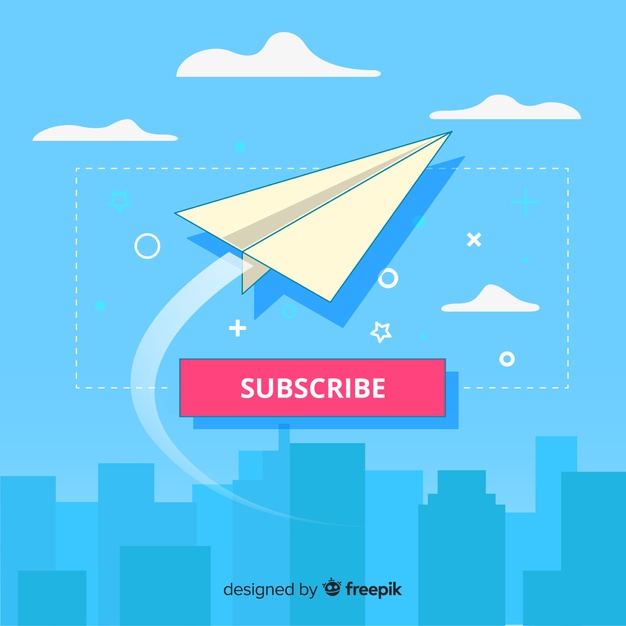Happy New Year 2020 to everyone!
In our previous blog, we talked about consistency and focus in planning and implementing SEO lead generation tactics for the New Year.
There is no better time to change lukewarm tactics than the first month of the year, when you have every chance to make your campaigns and other promotions shine. This is also the best time to reevaluate your older strategies to see if any of them needs to be changed for the better. This is part two of our mini-series on the top mistakes in SEO lead generation.
In this installment, we are going to focus on some of the technical aspects of website design that may be reducing the chances of generating warm leads, as well as some more tactical aspects of B2B leadgen in the current era.
1. Not making specific landing pages
Each campaign that you brainstorm and launch simply must have its own dedicated landing page. There are no exceptions to this rule, and there is a good reason for this. The purpose of a landing page is to provide all that energy so that the customer will pursue a particular slant (thinking) and objective.
In our last blog post, we mentioned that you need to focus on the outcome that you want (for example, having the customer give you a phone call) and exert all your energy to make that outcome happen.
You can do that through your dedicated landing pages. We’re sure that your home page looks excellent and has everything that a customer would need to give you a phone call. However, a campaign always has a specific slant, and you need to make sure that the slant is followed intelligently through the landing page.
Some of you might be wondering: should you make a different landing page for each platform that you use? If you are using different platforms, you can use a specific landing page if you have done a split test before. Either way you will have to rotate landing pages to get the results that you want for the duration of the campaigns.
You can create the best landing pages by:
– Landing pages are supposed to be easy to use. Don’t make things more complicated than they should be, because you wouldn’t want to end up driving away those precious leads. All the essential elements and content should be visible above the fold, meaning, you must not put important elements below where the customer would still have to scroll. Like an effective print ad, all the killer elements should be in just one location.
– According to experts, it takes about 90 seconds for a person to determine whether or not he/she likes a product or service, based purely on what is presented to the customer. Color psychology has a huge impact on this. Research which color combinations tend to produce a solid, positive effect on people and make sure that you will get them to act rather than sink into a stupor.
– Professional typography makes the content more readable and understandable. Typography is not limited to what font types you use on your landing pages. Typography also refers to the kerning and font size, and how you combine different font types and sizes to create a specific effect on the reader.
– Another tip that we can give you is to make sure that your content scannable. People on the Web don’t really read the way people did it 20 or 30 years ago. People scan for a few seconds before making the decision to read more slowly and thoroughly. This ‘scanning behavior’ was probably the result of trying to save time while browsing information on portable devices. Which brings us to…
– Mobile view. We’ve talked about this repeatedly in other posts, but it’s worth mentioning again here: Google has been prioritizing the mobile version of websites for years now. Do any kind of search and it is common to see mobile pages appear first than others.
Of course, there will be exceptions, but Google is adapting well to the fact that 80% of searches are coming from mobile devices and not laptops or PCs. There is a huge difference between the needs of those working from large screens and those on handheld devices, so it’s understandable why Google would prioritize mobile devices.
2. Not optimizing your CTA elements
The call to action or CTA is the holy grail of landing pages and campaigns, and for the most part, the call to action is the ‘heart’ of all the promotional content on a landing page. If you think about it, it’s the actual offer, the final line where you get to say that your offer is great, and the customer should consider trying it.
In the context of generating leads, the CTA is so vital and occupies such a high rank among the elements of a landing page that it has to be refined separately from the compelling copy. The code for the CTA is also separate as you can use a variety of techniques from pop-ups to lead capture forms to accomplish your goals.
Some things to remember when designing a CTA are:
– The first consideration would be to have an actual call to action. This is what confuses a lot of first time business owners in the beginning. For example, let’s say that you have a aesthetic dental business and you want people to come to your office for a checkup. Some folks might be interested in your services, but you need to convince them that your landing page offer is good.
They need to perform a specific action that corresponds to the action that you want in the first place. From downloading an ebook to calling your office’s number, the CTA is all you really have because it’s action-driven and helps your customer enter the marketing funnel/pinwheel.
– Going back slightly to our discussion on color psychology, it’s imperative that your CTA would not be the same color as the rest of your content. If it’s embedded visually in such a way that it looks like a paragraph from your most compelling copy, then that might confused your readers.
What digital marketers have been doing is at least separating the CTA visually from the rest of the copy so that readers would be mentally conditioned to say, hey, this is the real deal, this is what I should do so I can get all the benefits that I have been reading about. Ideally, you would also want your customers to say that it’s very easy to perform what needs to be done. That really adds to the attractiveness of the offer.
– CTAs should be as specific as possible and please avoid the generic “CLICK HERE” because expert stats have proven long ago that it doesn’t work anymore. Instead of putting a generic “CLICK HERE,” it would be much more effective to be specific as well with what they’re going to get when they perform the action.
If you are offering a free webinar, put “reserve my seat” (or something to that effect), if you want them to call you, put “give me my free consultation!” There are so many creative ways to do this that you simply have to think deeply of how to best present the outcome itself to the customer.
– We would have to say that lead capture forms are just as important as the associated CTAs because if the lead capture form is designed poorly, you are going to get poor results, too. Lead capture forms can contain a good amount of fields, but make sure that you highlight with an asterisk the required fields.
That way, people can just fill up the minimum number of fields with their valid information and get what they need. For the most part, many digital marketers just require email addresses and names from their customers before providing the free product or service in exchange for a possible lead.
– It is possible for a landing page to have more than one call to action. But is it ideal to have two or more CTAs? Never. Ideally, each landing page should have just one very specific action to perform, and that’s it.
All the content there should be dedicated to that action. All less essential content should be placed below the fold of the page, because they can be missed by the customer and not affect the overall performance of the copy that you worked hard to design in the first place This is to ensure that your hard work will not go to waste once the landing page goes live.












